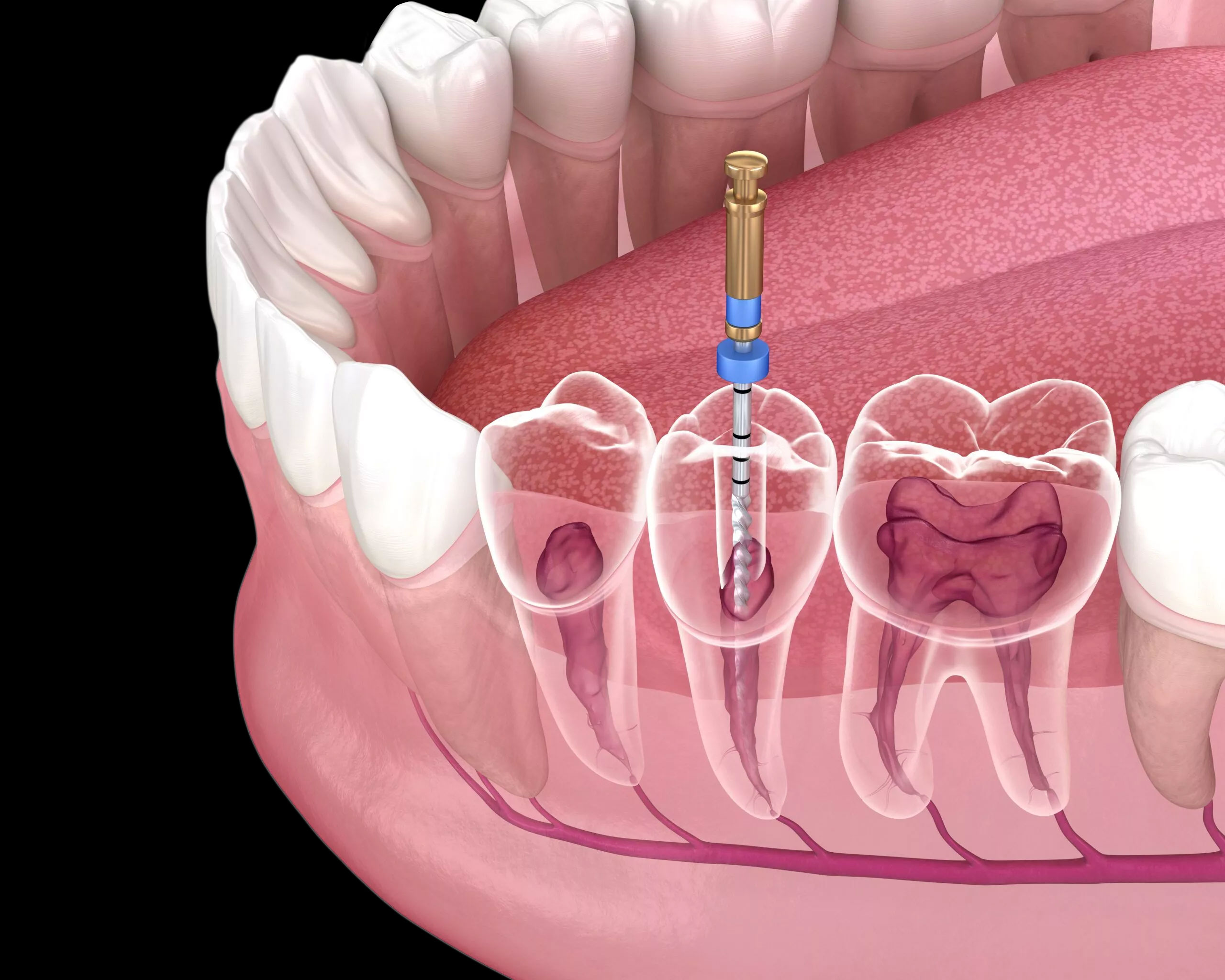Tooth pain is one of the telltale signs that your tooth pulp has been compromised, with infections leading to inflammation resulting in abscesses (drainage of pus-filled sacs within teeth).
Root canal treatment is a dental procedure designed to remove infections and bacteria from infected or damaged tooth pulp, sealing it off permanently with permanent material to prevent further infections in future.
Preparation
Root canal treatment should only be undertaken when absolutely necessary to prevent serious complications. If your toothache won’t go away or is radiating to the jaw or other teeth, or you experience radiating pain that radiates around them, this could indicate an infection in the pulp of the tooth, potentially resulting in swelling of gums and an inability to bite down or chew properly. You might also develop fistulae on the gum which alert your dentist that pus, blood or infectious materials have entered and need extracting via root canal.
Root canal therapy is a dental procedure designed to clean and seal infected tooth tissue in order to keep the tooth functional while also preventing further infections in its root.
Root canal treatments are conducted under local anaesthetic, to alleviate any discomfort during the procedure. Your dentist will place a rubber sheet around the affected tooth to protect it from saliva or bacteria that might compromise treatment results, often using a dental dam to ensure you don’t breathe in any chemicals used to numb it.
Once numb, a dentist will open your tooth by means of its crown (the flat part at the top), to access any infected pulp tissue inside. While this can be uncomfortable, try relaxing and taking deep breaths as this procedure may last several hours before wear-off occurs; additionally it would be wise to consume food beforehand to increase effectiveness of numbing medication.
Modern techniques of root canal preparation emphasize focusing on the coronal section before moving to apical canal preparation, to maximize penetration of irrigation solution and lessen chances of compacting debris in the final canal segment. Copious irrigation after each file as well as watchwinding technique with slight apical pressure are employed in order to advance files without overworking dentine or creating blockages are also utilized.
Your dentist will use various files to shape and prepare the canal for obturation. Each file should be carefully inserted until it comes within 2.0 mm of working length before being carefully extracted using a silicone stop. Finally, the canal is cleaned, rinsed and sanitised using a mixture of EDTA and sodium hypochlorite to eliminate debris such as plaque build-up or infected debris from within its walls.
Anesthesia
Dependent upon how a root canal is performed, dentists may utilize various anesthetic measures to make treatment painless. These may include: i. Blocking nociceptive impulses along peripheral nerves. ii. Preventing central nervous system pain perception by prescribing medication such as an NSAID.
Root canal therapy is necessary when the pulp of a tooth (containing blood vessels, nerves and connective tissue ) becomes inflamed or infected due to deep cavities or physical trauma to the mouth or teeth. Untreated, an infection could spread to other parts of the tooth as well as to surrounding gum tissue causing further problems like pus-like discharge from pores within gum tissue, swelling gums or fistula formation on gum lines or even cracks in teeth or around them – these complications often leading to further medical interventions like cracks being made permanent!
Root canal therapy removes infected or dead tissue and restores normal function by filling and sealing the interior of the root canal. After treatment is complete, it is typically restored with a dental crown to match its surroundings – this will prevent cracking, weakening, or brittleness and further infections in future years.
Most patients do not experience pain during root canal treatment, however some may experience mild discomfort post-procedure due to healing processes; this discomfort can usually be treated using over-the-counter analgesics.
Your dentist will administer local anesthetic to numb the area before placing a small protective sheet called a dental dam over the affected tooth to keep saliva and debris from coming in contact with it while they perform treatment. Depending on the severity of your issue, IV sedation might allow patients to sleep during root canal therapy treatment.
Nitrous oxide (commonly referred to as laughing gas) is an increasingly popular method of sedation for root canal treatments, administered via an anti-anxiety mask worn over the nose and working quickly to relieve anxiety. While it doesn’t put people completely to sleep, laughing gas will create an atmosphere of relaxation for people anxious about receiving root canal procedures.
Treatment
Root canal therapy is often the ideal treatment option for teeth that have inflammation or infection, including abscess formation. Left untreated, these teeth could loosen within their socket and eventually fall out completely; but with timely root canal treatments removing bacteria and healing naturally while saving your natural tooth for years to come.
Starting off the procedure involves an in-depth physical and x-ray examination of an infected tooth. Once we understand its nature, a local anesthetic will be given to numb the affected area for maximum comfort during treatment. Next, a “dental dam” is put around it to keep saliva away and ensure no other substances get into its vicinity during this phase.
An access hole will then be created through the crown, the flat top part of a tooth, to expose its pulp in the centre. Infected pulp will then be extracted using dental instruments while empty tooth canals are disinfected, shaped, and filled back up using gutta-percha – this process ensures all bacteria is eliminated to help avoid future infections.
Once a tooth is fully cleaned, its canal is sealed using a color-matched root canal filling to match its surrounding teeth. Next step includes applying a tooth-coloured restoration such as a dental crown to restore the appearance and protect it against further infection or fracture.
Although anesthesia administered during root canal treatments should ensure no discomfort during treatment, some discomfort is inevitable in the days that follow – from dull aches to sharp pains – which is easily managed with over-the-counter analgesics.
Root canal therapy can help save an infected tooth and restore a functional and beautiful smile, but even with successful treatment it remains susceptible to damage or decay in the future – thus it’s important to maintain good oral hygiene, limit sugar intake and visit the dentist on a regular basis.
Post-Procedure Care
As with all dental treatments, it’s essential to follow the advice of your dentist when receiving dental treatments. Any discomfort caused by treatments is usually treatable using over the counter medication; in addition, hard and sticky foods should be avoided as they could irritate teeth or temporary fillings and cause further issues.
Root canal treatment is often employed to address an infected and/or abscessed tooth, as soon as symptoms arise it must be dealt with immediately to stop further infection spreading.
At the outset of any root canal procedure, your dentist will administer local anesthetic to numb the affected area and place a “dental dam” around your tooth to isolate it from saliva and other debris during treatment.
Once the anesthetic has taken effect, the dentist will use special dental instruments to extract decayed tooth structures, open an opening in the affected tooth, remove unhealthy pulp tissue, clean canals with different size files and then irrigate to ensure all bacteria is gone from your system.
Root canal treatment is often successful and the affected tooth can be saved; however, in rare instances the canal was not completed correctly and must be extracted.
Routine dental checkups can lower the risk of root canal treatments failing, by helping detect problems early and treat them efficiently.
Root canal procedures may seem intimidating, but they’ve helped many save their teeth through this procedure. Any infection in the mouth must be addressed as quickly as possible to minimize risk and stop irreversible abscesses from developing. If you experience pain, swelling, or bad taste in your mouth seek medical advice immediately – the sooner problems are identified and addressed the better chance you have of saving a tooth!
Disclaimer: The content on this blog is intended for general informational purposes only. It is not a substitute for professional medical advice, diagnosis, or treatment. Always consult qualified healthcare providers for personalized advice. Information regarding plastic surgery, dental treatment, hair transplant, and other medical procedures is educational and not a guarantee of results. We do not assume liability for actions taken based on blog content. Medical knowledge evolves; verify information and consult professionals. External links do not imply endorsement. By using this blog, you agree to these terms.





